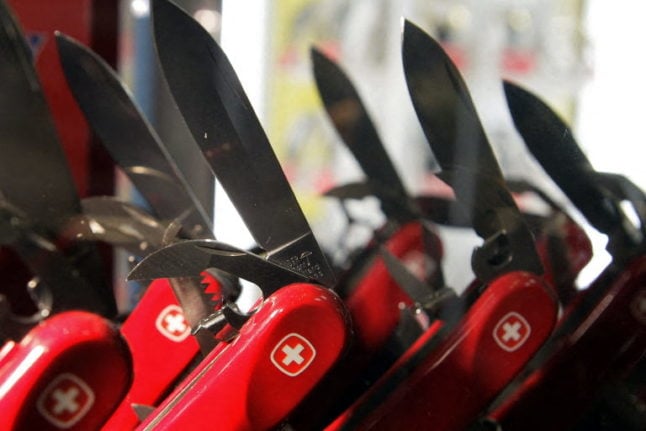The red army knives with a Swiss cross logo are as much part of Switzerland’s image as cheese, chocolate and yodelling.
Originally, the knife’s primary purpose was to help troops perform basic tasks such as cutting string and wires, opening a can of food, as well as assembling and disassembling their service rifles.
To this day, each new recruit receives a basic ‘Soldier’ knife at the beginning of their service. This particular model features a blade, can opener, screwdriver, blade, wood saw, cap lifter, wire stripper, reamer, and key ring — all the accoutrements needed to defend Switzerland.
However, the sharp-looking pocket knife is about to become a little less sharp.
Why is that?
The knife’s manufacturer, Victorinox, is working on a model without a blade — that is, a ‘knife’ without an actual knife.
The increasing safety regulations around the world have prompted the company to make this drastic change.
“The blade creates a weapon image in some markets,” company CEO Carl Elsener said in an interview, pointing out that about 80 percent of knives produced by Victorinox are exported.
This is not the first time that the company has been confronted with the fact that the blade of its pocket knife is seen as a possible weapon.
After the terrorist attacks in the USA on September 11, 2001, sales of army knives fell by over 30 percent overnight, and the tool was no longer allowed to be carried in hand luggage on board planes.
“This event showed us that we must not become dependent on a single business area,” he said.

What is going to happen now?
Elsner didn’t specify whether all the products will be blade-less, or if some, especially those intended for the Swiss army, will still include the knife.
He did mention, however, that the company will continue to manufacture ‘knives’ to be used by non-military personnel, including fishermen, cyclists, hunters, campers, and other outdoor enthusiasts.
That’s because some of the modern knives feature a wide variety of modern attachments for practically all purposes and hobbies, such as fish scaler, metal saw, pliers, chisel, screwdriver, scissors, magnifying glass, pen, can and bottle opener, and tweezers, among dozens others.



 Please whitelist us to continue reading.
Please whitelist us to continue reading.
This increasingly Woke World will one day Wake Up to find that Weary Normals have gone and left them to it…
Stand up and be counted, Victorinox, – all Normals still need your blades!